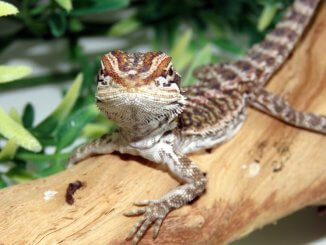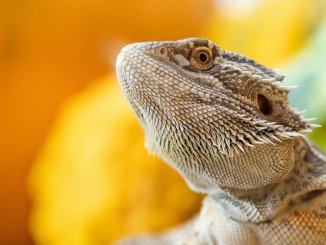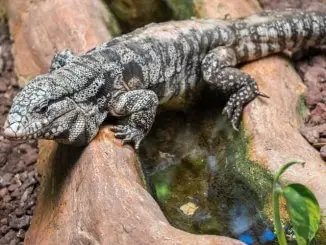Leopard geckos come in a wide variety of different colors and patterns. They can range in price from something almost anyone can afford to over $3,000. You can spend as much or as little as you want.
One common misconception people have about these adorable geckos is that they are all cheap. But, this is not always true.
Morph (i.e. color and pattern), pedigree, and where you buy a Leopard Gecko from all affect the price.
In this article, we cover the price of buying a Leopard Gecko. We also share fun facts about their price, what affects it and the cost of ownership.
Keep reading if you have ever wondered how much is a Leopard Gecko…
How Much Is A Leopard Gecko?
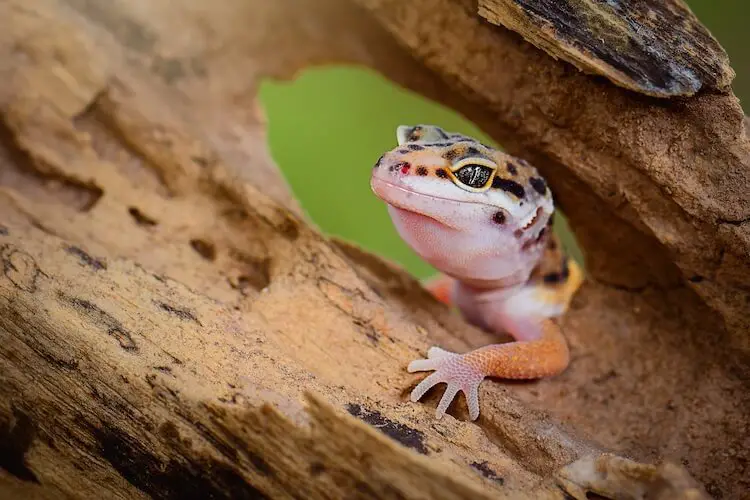
Leopard geckos have a wide price range. You can easily buy one for as little as $15, or as much as $3,000. However, the price of a pet leopard gecko is typically $30 to $75.
If you are buying from a local pet store, PetSmart or Petco you should not be paying more than $50.
One nice thing about leopard geckos is that you can really spend as much or as little as you want. You can easily find an inexpensive pet, likewise, you can also spend hundreds of dollars on a breeding pair of morphs.
Many factors affect the price of a leopard gecko.
Breeder, bloodline and morph have the biggest impact.
Age, state and size can also impact price.
Morph Price
The biggest determining factor in a leopard gecko’s price is what morph it is. Morph is a word used to describe Leopard Geckos with specific colors, patterns, or sizes. There are over 50 different morph species.
One of the most expensive morphs ever sold was the black pearl morph bred by The Urban Gecko. They started their bloodline with a pair of black pearls and sold the morphs for $3,000 per gecko!
Some morphs are much harder to breed for than others, resulting in different prices.
The harder the morph is to produce, the more expensive they are. Because of this, Leopard geckos that have recessive traits are generally more expensive.
It can take multiple generations for morphs to express a recessive gene.
A good example of this is the albino morph.
Any leopard gecko can have the recessive gene for albinism, but it might be masked by a dominant gene that causes a normal. In order to produce albino offspring, you would need to breed it with another species that has albinism in its lineage. If none of the offspring are albino, you then need to then breed the offspring with another albino lineage until successful.
Breeding several generations is very costly to a breeder.
Leopard Gecko Price Table
| Morph | Price (USD) |
|---|---|
| Standard or Common | $30 |
| Fancy | $50 |
| Patternless | $75 |
| Lavender | $75 |
| Blizzard | $80 |
| Eclipse | $100 |
| Mack Snow | $125 |
| RAPTOR | $150 |
| Giant | $175 |
| Tangerine | $200 |
| Blood | $200 |
| Tremper | $250 |
| Lemon Frost | $350 |
| Black Pearl | $3,000 |
Lineage is another price factor. Lineage is the ancestry or pedigree of an individual.
If a leopard gecko is from a lineage known for being good breeders and healthy or for producing very vibrant colors and patterns they will be more expensive.
One well-known lineage is the Hot Geckos Tangerine. This is a bloodline of leopard geckos with almost neon orange coloring. This particular line of leopard geckos is very distinct from other tangerines.
Sometimes specific morphs (e.g. the enigma) have neurological health issues, or some geckos just did not have good breeders.
Lineage is typically only important to other breeders or experienced keepers, and not first-time keepers.
If you want to buy a leopard gecko to breed them, you will want a lineage that has produced consistently large, fertile clutches. Offspring that do not survive are detrimental to a successful breeding program.
More Factors That Affect Price
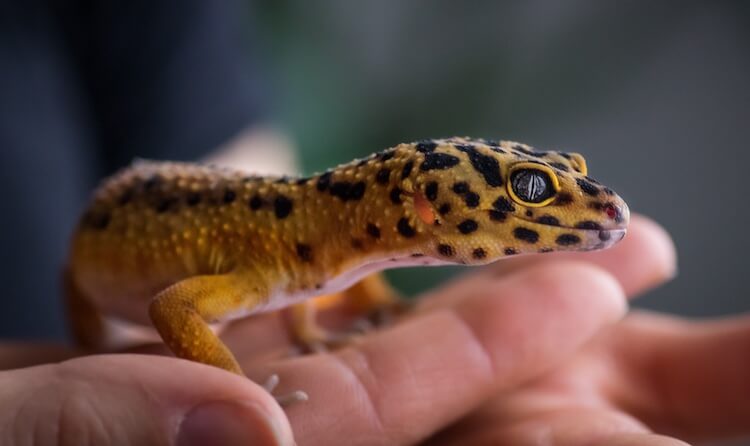
In the United States, leopard gecko prices can vary from state to state.
States like Florida and Ohio will usually be cheaper than states like Virginia or Michigan. Florida and Ohio both hold some of the largest reptile expos in the United States and have a higher percentage of reptile ownership.
In states like Alaska they are very expensive because of a lack of breeders. It is also harder to ship leopard geckos to Alaska as it is too cold for live transit most of the year. Reptiles should not be shipped when temperatures are below 40°F.
It is also important to know that in some States (e.g. Hawaii) it is illegal to keep a leopard gecko, as well as many other exotic pets.
Where you buy a Leopard Gecko from will also affect the price.
Species from pet stores are generally much cheaper than those purchased from private breeders. Prices can also vary among private breeders. Those who have a reputation for being knowledgeable and producing healthy reptiles are able to charge a bit more:
| Seller | Minimum Price | Maximum Price |
|---|---|---|
| PetSmart | $20 | $75 |
| Petco | $20 | $100 |
| Local Pet Store | $30 | $100 |
| Private Breeder | $50 | $200 |
When you buy a leopard gecko from a breeder, you will normally get more information about its age, genetics, welfare, feeding routine and growth rate. This information is very important to help keep your pet healthy, especially during the first few weeks when they can be stressed from the move.
A breeder will also be able to tell you about your leopard gecko’s parents and lineage.
Breeders tend to have much healthier animals than pet stores too.
Pet stores are usually unable to tell you anything about your leopard gecko. They label most reptile morphs as either common or fancy and rarely know how old it is.
Age can affect price, but not as much as the factors mentioned above.
Younger leopard geckos are cheaper to buy than adults, particularly ones that are not sexually mature as they cannot reproduce.
Adults are more valuable than babies and juveniles as they can be bred and are cheaper to care for. Babies are expensive to care for and keep during the first six months.
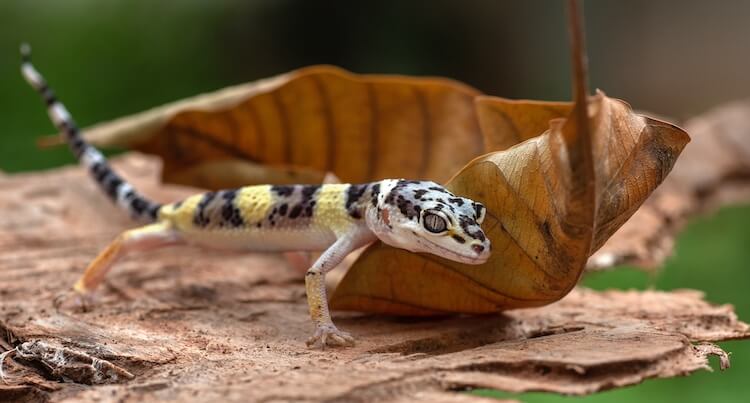
Fun Leopard Gecko Price Facts!
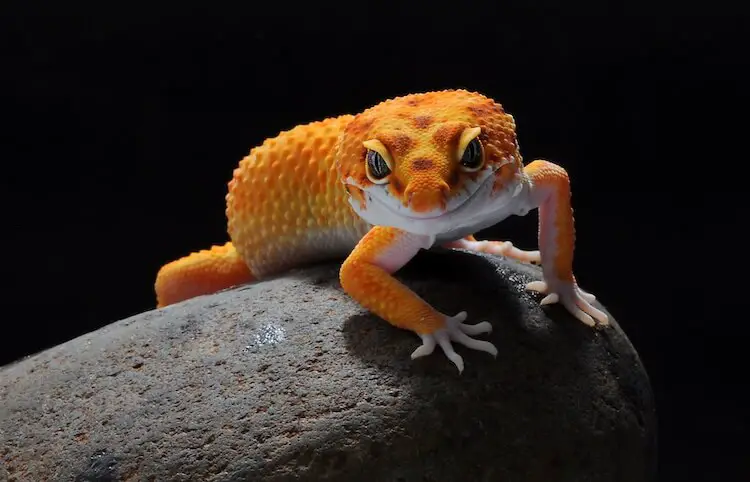
One of the most expensive leopard geckos is the black night morph.
These beautiful morphs can sell for over $3,000. This morph is completely black and melanistic. They are a beautiful black-brown color with a white belly. Their unique coloration and rarity make them the crown jewel of any breeder’s collection.
Black night and black pearl morphs are some of the hardest morphs to breed and find. It took many years of trial and error to produce this species, which is one reason why they are so expensive.
Generally, any leopard gecko with a large amount of black is going to be more expensive. The black color makes a leopard gecko’s price increase.
Another interesting price fact is that despite their increasing popularity, they are more affordable than ever. There are currently over 50 morph Leopard Geckos for sale. With many new morphs being bred each year, the price of normal and common morphs has been dropping.
Leopard geckos are one of the cheapest pet lizards to buy.
Other pet lizards like the Bearded Dragon have become popular with celebrities. Chrissy Teigen and Kim Kardashian are just two famous Beardie owners. Celebrity interest has increased their price and made them harder to buy.
Leopard Gecko Cost of Ownership
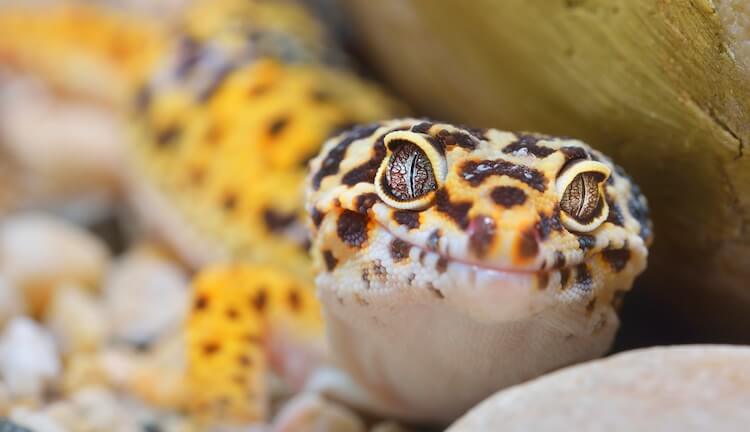
Leopard geckos are not as expensive to keep as most other reptiles as they do not grow very big. But you will need to spend a few hundred dollars in upfront costs to setup their tank:
- 20-gallon Tank: $200.
- Screen top: $20.
- Substrate: $10.
- Heating Bulb: $10 to $15.
- UVB Bulb: $15 to 20.
- Reptile Carpet: $10.
- Water bowl, hides, thermometer and hygrometer : $100.
Leopard geckos are very active and need at least a 20-gallon long reptile tank. This will usually cost you about $200 for the tank, plus an additional $20 to buy a screen top.
You might be able to find a used 20-gallon tank for a little cheaper, in that case you should probably plan on budgeting about $100 for the tank and lid.
After selecting a tank, you will need to setup a good habitat. Start by finding a suitable substrate.
Many people think that sand is a good substrate as leopard geckos are from semi-desert environments. This is not true and is a common mistake. While eating they can accidentally swallow sand. This can lead to impaction, which is a blockage in their gastrointestinal tract.
A much better substrate choice is reptile carpet and it will only cost about $10.
If you don’t want to use reptile carpet, newspaper is another good option that you can usually find for free, or you could pay $7-$24/square foot for some nice tile flooring.
Leopard geckos also need a water dish, a dish for mealworms, a pair of feeding tongs, enclosure decor, some structures they can hide in or under, a humid hide, a thermometer, a hygrometer, and a dome for the UVB bulb and heating bulb. This will increase your total upfront cost by approximately $100 to $200.
Now that we have covered the upfront costs, let us talk about monthly expense.
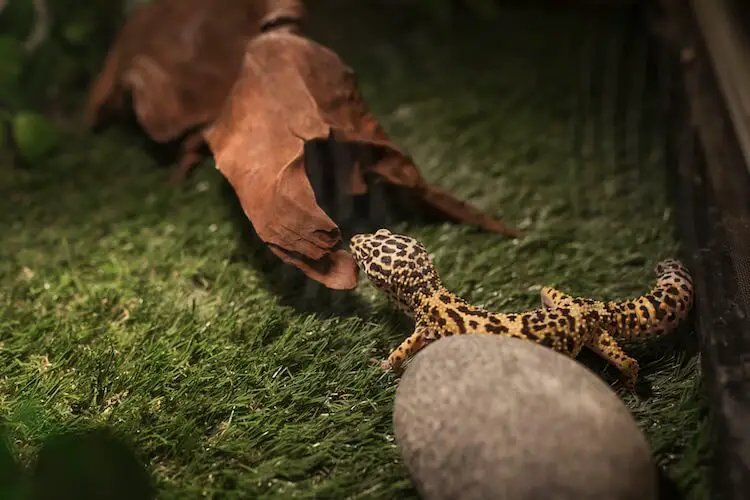
Monthly Costs
The majority of monthly expenses will be spent on lighting, food, and substrate.
Leopard geckos need a basking spot in their tank that is 87-90 degrees Fahrenheit. This basking spot can be warmed with either a basking bulb, spot bulb or a heat mat. This depends on your heating and lighting setup:
- Heating spot bulbs will cost $10-$15, but they need replacing every month or two.
- UVB basking bulbs normally cost $30, and will need replacing every six months.
- Heat mats cost around $30 depending on their size and need replacing every few years.
Substrate is another supply that needs to be replaced every month.
Reptile carpet is cheap and will only cost $7-$10, depending on the tank size. It needs to be replaced once every four to six weeks. When the carpet begins to look ragged, and the fibers are loose, you will know it is time to replace it.
Food is one of the most expensive parts of keeping leopard geckos.
Adult leopard geckos should be fed every other day and will eat between 4 to 7 large crickets or mealworms per feeding. This will cost you about $20 per month. Babies should be fed 5-7 small crickets or mealworms daily, which will cost you about $40 per month.
You will also need to buy a calcium dust supplement to dust on the feeder insects. This costs about $5 per container and will last you about three months. Calcium supplements ensure that your leopard gecko is getting enough calcium to maintain its bodily functions and helps prevent diseases like metabolic bone disease.
Finally, you will be paying monthly or annual healthcare costs.
Many people do not take their reptiles to a veterinarian unless it is an emergency, but yearly wellness visits are a good idea to make sure that your leopard gecko is happy and healthy. A wellness exam will usually cost between $50 and $100.
You also may be able to get pet insurance, but it can cost anywhere from $30 to $100 per month.
| Item | Monthly Price |
|---|---|
| Heating Bulb | $10-$15 |
| UVB Bulb | $15-$20 |
| Substrate | $7-$10 |
| Food | $15-$25 |
| Calcium Powder Supplement | $5 |
| Pet Insurance (optional) | $35-$100 |
Summary
You should now know how much to budget if you want to buy a Leopard Gecko.
Leopard geckos cost as little as $15 or as much as $3,000. For a normal pet Leopard Gecko you should expect to pay $30 to $100. Do not pay more than $50 if you are buying from a pet store.
Some factors that influence the price include: morph, breeder, lineage, and where you live.
You should expect to pay between $200 to $400 to set up their enclosure. You will also need to spend around $60 per month on costs like food, supplements, heating, lights, and substrate.
If you decide to get pet insurance, you will likely be paying around $35 per month.
Let us know if you found this article helpful while trying to decide if you can afford to bring home a leopard gecko.

